
About Andrew Cusack
 Writer, web designer, etc.; born in New York; educated in Argentina, Scotland, and South Africa; now based in London.
Writer, web designer, etc.; born in New York; educated in Argentina, Scotland, and South Africa; now based in London. read more
News
Blogs
Reviews & Periodicals
Arts & Design
World
France
Mitteleuropa
Knickerbockers
Argentina
The Levant
Africa
Cape of Good Hope
Netherlands
Scandinavia
Québec
India
Muscovy
Germany
Academica
The Senate of South Africa
Die Senaat van Suid-Afrika
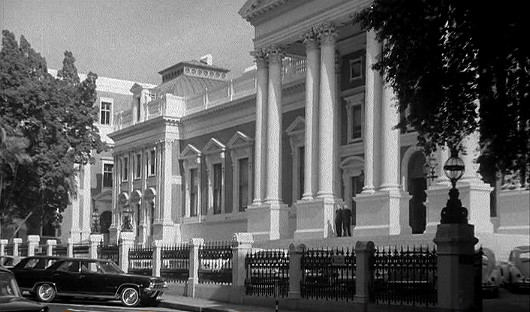
THE SENATE OF South Africa has had something of a tempestuous history, a fact which is attested to by the vicissitudes of the Senate chamber in the House of Parliament in Cape Town. The Senate formed the upper house of South Africa’s parliament from the unification of the country in 1910, in accordance with the proposals agreed to by Briton & Boer at the National Convention of 1908. Its members were originally selected by an electoral college consisting of the Provincial Councils of the Cape, the Transvaal, the Orange Free State, and Natal, and the members of the House of Assembly (the parliament’s lower house), along with a certain number of appointments by the Governor-General on the advice of the Prime Minister. When South Africa abolished its monarchy, the State President took over the appointing role held until then by the Governor-General, but the Senate remained largely intact until 1981, when it was abolished in advance of the foolish introduction of the 1984 constitution with its racial tricameralism.
The Senate made a brief comeback in 1994, when the interim constitution provided for a Senate composed of ninety members, ten elected by each of the provincial legislatures of the new provinces. The 1994 Senate, however, was replaced by the “National Council of Provinces” in the final 1997 constitution.
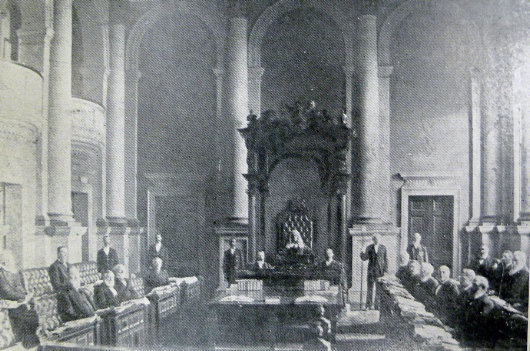
The Senate chamber itself was originally the home of the Legislative Council of the Cape of Good Hope, the upper chamber of the old Cape Parliament, which met here until the Union of South Africa was born in 1910. The addition of a press gallery behind the throne was one of the few changes when the Legislative Council chamber was adapted for the Senate.
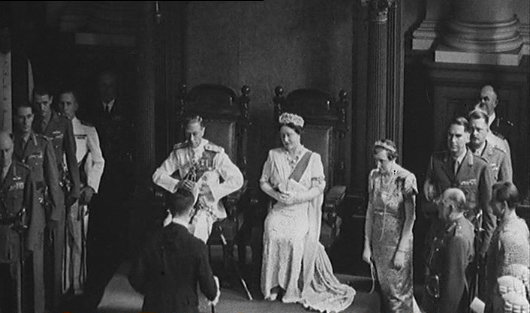
King George VI opened the South African parliament from the throne of the Senate in 1947, the first time in the history of the British Empire that a dominion parliamentary session was opened by the Sovereign himself.
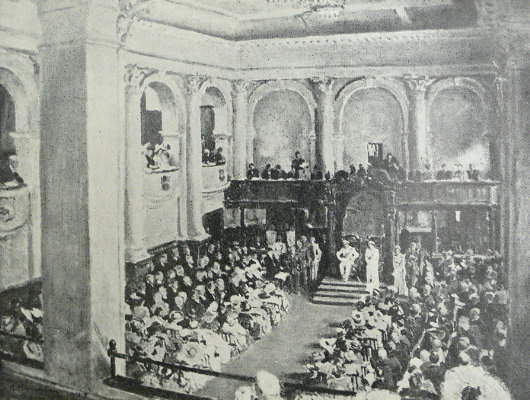
Parliament deemed the event of such importance that it commissioned a painting depicting the historic event.

The Senate chamber was a reinterpretation of the House of Lords but in a natural Cape vernacular. The traditional red livery of upper houses in the British Empire was paired with the whitewash of the Cape Dutch style. After the abolition of the Senate, this chamber became home to the House of Representatives, the chamber of parliament representing the Coloured (mixed-race) population under the tricameral constitution until 1994, when that chamber was abolished.
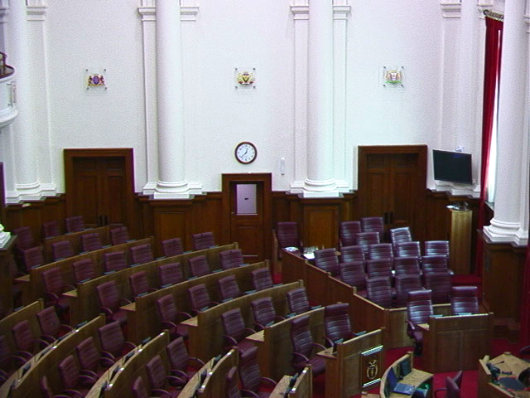
A few years after the introduction of the National Council of Provinces, the decision was taken to tear the Senate chamber apart and redesign it for the new upper house. In this reconstruction, the traditional antiphonal set-up of Commonwealth legislatures was replaced by the semi-circle introduced by the French Revolution. “The semicircular assembly, which appeals to political theorists,” no less an authority than Winston Churchill tells us,
What a shame this chamber that has witnessed such history has been dissembled in such a modish fashion.
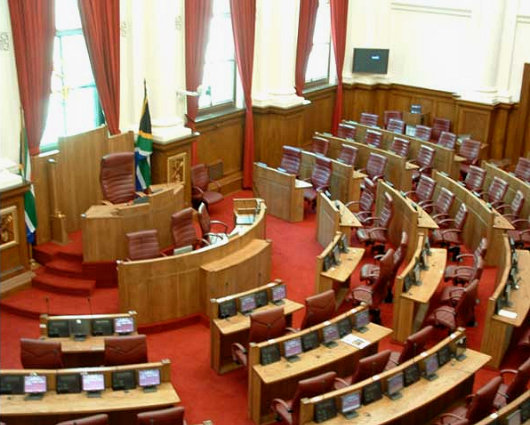
Cape Town — Kaapstad
Part I: The Houses of Parliament, Part II: The Senate, Part III: The House of Assembly, Part IV: The National Assembly, Part V: The State Opening of Parliament
Search
Instagram: @andcusack
Click here for my Instagram photos.Most Recent Posts
- Articles of Note: 11 November 2024 November 11, 2024
- Why do you read? November 5, 2024
- India November 4, 2024
- The Lithe Efficiency of the Old Constitution November 4, 2024
- Waarburg October 2, 2024
Most Recent Comments
Book Wishlist
Monthly Archives
Categories



Andrew –
Thank you for this article on the South African Senate. I, too, lament the redesign of the chamber for the use of the National Council of Provinces. However, it does occur to me that perhaps a political stament was intended. Something like a break with the past?
Harold
PS: Which parliament shall we visit next? I’ve always wanted to author a coffee table book: “Photographs of the World’s Legislative Buildings.” (I know. Call me odd.) Perhaps you could take up that cause?
My three favourite parliament buildings are, bizarrely, all gothic: Westminster, Budapest, and Ottawa.
The parliament in Victoria, B.C. is also high on my list. More towards the classical is the Old Irish Parliament House (now the Bank of Ireland) which I have written about elsewhere on this site. Ditto the Old State House in Hartford, Conn.
A Peruvian friend and reader of this site donated a beautiful volume on the Legislative Palace in Lima.
The Indian Parliament is also a doozy.
“Disassembled”?
“Dissembled”, in the sense of veiled or given a false front.
Andrew –
Yes, the parliament building in Victoria is lovely. I enjoyed visiting it many years ago. Victoria in general was rather nice as I recall. Dublin, Ottawa, and London also have lovely buildings. And, I must say that the United States capitol is impressive too. But the New York State Capitol in Albany is disappointing.
Harold
Let us not forget Vienna’s Neoclassical glory. Alas, Foster mutillated the Reichstag, and that is deprived of us too.
Actually I dislike the Austrian parliament building. The detailing is fine, but the massing is exceptionally dull. (It’s much like the U.S. Supreme Court). A very boring classical composition.
Thank you for the photographs. I do prefer the old design too. For me, South Africa and its politics is still a puzzle in spite of academic study of the same. On some occasions, it occurred to me to dismiss the Boers as wild bumpkins set loose in an equally wide country, while at others i certainly could not disregard the cruelty and savagery of the Natives, howsoever much their martial spirits were extolled by the British. I have personally never been there, living as I do, on the island of Mauritius. But given my experience of South Africans, Boer, British (or Black, amongst which, i must confess of having practically no acquaintances at all), I would naturally tend to have a good opinion of the British and am on very good terms with most of them. On the other hand, i have never really understood the Boer or at least been able to empathize with them. It is very difficult for me to have anything to do with them. There is, I feel, both a language and cultural problem. The markers of civilisation are different and the historical references as well. It may be the effects of National Party educational policies.
Yet, South Africa, with its history, remains a fact recorded by Clio on her scroll.
Thank you,
Francis.
ps: The above might sound pointless or un-PC, but these photographs inspired to voice out the malaise i feel whenever i come upon this subject.
No shortage of false fronts in SA or the UK.